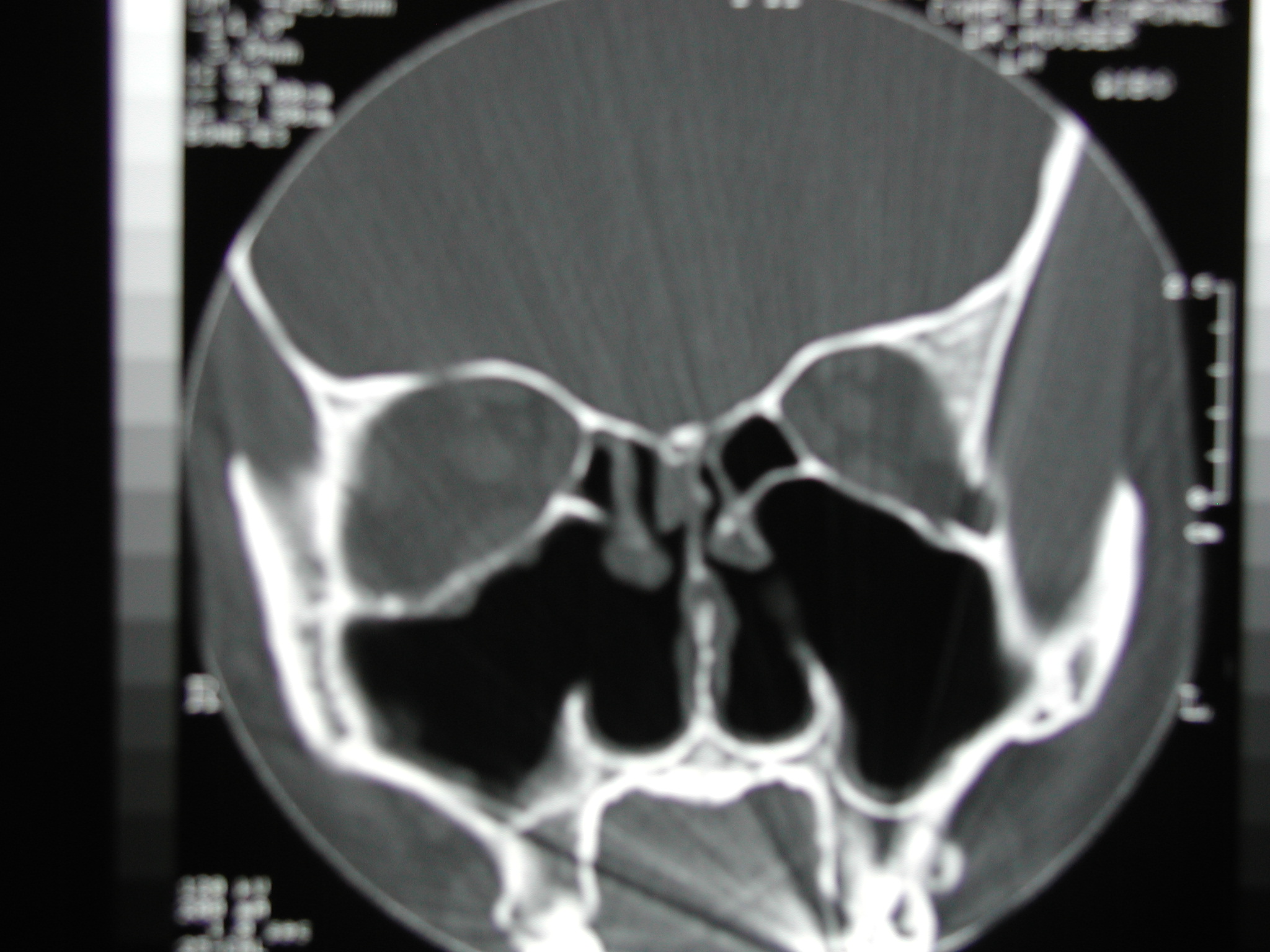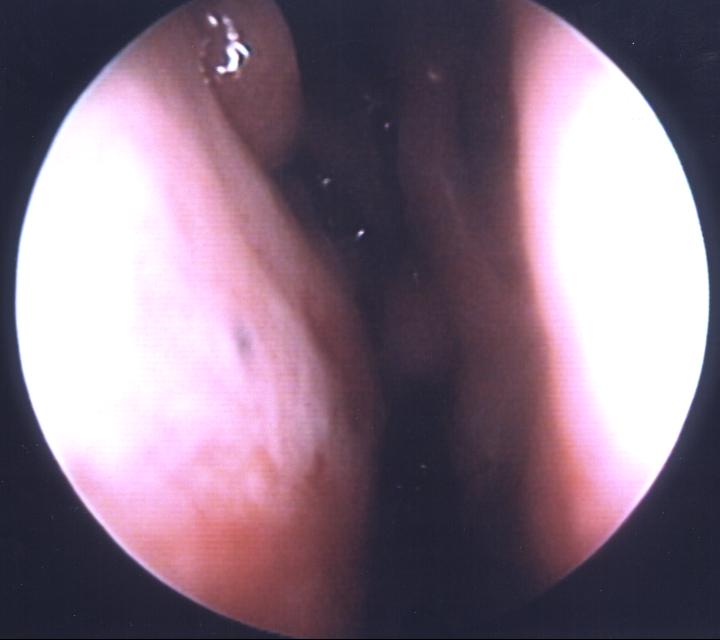| Empty Nose Syndrome: please read all theses pages if you have an interest in this topic |
| The "Empty Nose Syndrome" is a term coined by Eugene Kern, MD, at the Mayo Clinic. It refers to the fact that a patient's CT scan looks empty, or devoid of normal tissue, following nasal surgery, specifically turbinate excision. The CT scan below depicts a typical view of a patient experiencing the symptoms of empty nose syndrome. As you may have seen on other pages within this web site, the nose has various normal projections into it called turbinates: inferior, middle, and superior (and sometimes even a supreme turbinate). These projections are important for a number of reasons: 1) The turbinates provide surface area to allow particulate matter to strike them, entrapping the material in mucus, that is then swept into the pharynx to be harmlessly swallowed. This prevents the material from being inhaled and overtaxing the lung mucociliary clearance. 2) The turbinates work to moisten and warm the air we breathe so that by the time it reaches the lungs it is near 100% humidity and close to body temperature. 3) The middle turbinate hoods over most of the sinuses, and blocks the particulate matter from entering and setting up an infection, etc. 4) The upper turbinates may harbor cells of the olfactory system. 5) The turbinates provide surface area/ airway resistance to inform the brain that air is traversing the nose in a sufficient volume to sustain life. This is a poorly understood concept, and an area of my research interest. Without sufficient mucosa to sense the air, the person feels as though they are choking, despite fully adequate air intake. 6) As some physicians have postulated, inferior tubinate vasular engorgement may serve to make us roll during sleep to prevent bedsores, etc. While lying on one side the dependant inferior turbinate becomes engorged, and when sufficiently blocked the patient will roll to the other side without awakening. The natural nasal cycle may play a role in this process as well. What symptoms does a patient with Empty Nose Syndrome experience? They feel as though their nose is always congested, and that they cannot entrain sufficient air through their nose to breathe adequately. They may report they feel as though they are suffocating. Paradoxically, the individual may report that the only time that they feel as though they are breathing OK is when they have a cold. Pain may be an issue. The patient may also complain of crusting in their nose. These syptoms occur years after a turbinate excision. "Why did my physician take all this tissue out and cause me worse problems?" is a question I am asked occassionally. Patients initially will do very well following a turbinate excision: they report they breathe MUCH better at first. The sensation of nasal blockage seems to occur years later. The surgeon does not intend harm, but it is hard to follow such a late development. Furthermore, not everyone develops problems; those patients in moist climates may do better. Most patients do NOT develop ENS after nasal surgery; it is a rarity. What treatment options are there? Moisturization is a vital element: through the use of a nasal irrigator to moisten and cleanse an overtaxed mucociliary system. Saline jelly may provide some relief inbetween irrigation sessions. Estrogen drops from a compounding pharmacy, or Breathe-ease from Hydromed may be helpful. This problem actually happens to be a research interest of mine. Theoretically if we provide some resistance to airflow in the nose, we might provide some sensation of airflow and bring relief. The turbinates can not be recreated, but tissue from elsewhere in the body can be deposited submucosally. The location of the airstream, and hence where one places an implant, is important in such a procedure. Interested prospective patients should email me (shouser144@yahoo dot com - place ENS in the subject line, replace dot with a period - altered to escape email retrieval programs). |
 |

|
 |
| The CT above depicts a patient with empty nose syndrome after inferior turbinate resection. The patient on the right has had a partial left middle turbinate resection, and a graft to the septum bulks up the area to simulate a middle turb. This patient was perhaps 50% better after an initial surgery - further augmentation has provided further benefit. |